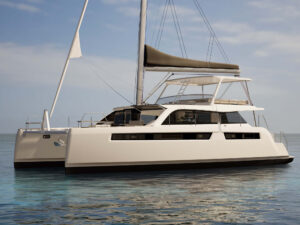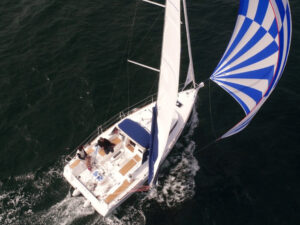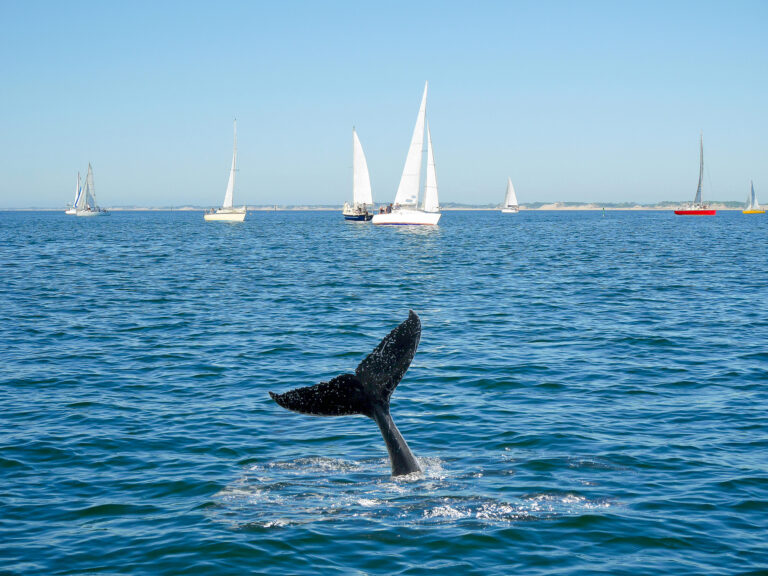
Just because you’re sailing in paradise doesn’t mean you can let down your guard. Wise skippers (and crews) should be prepared for any crisis that might occur. These are boats, after all, and stuff happens.
First, it’s important that you make full use of your charter briefing. Pay attention and ask questions. Your charter company’s briefer can point out the location of fire extinguishers (and how to operate them), life jackets, the propane stove, fuel shut-offs, bilge pumps (electric and manual) and the emergency tiller. Ask to be shown all the seacocks for the engine and heads. Understand everything clearly, or ask more questions.
During the briefing, be sure that at least one crewmember (besides the skipper) understands VHF radio procedures and how to reach the rescue/aid service in your charter area. Check to see what channel the charter company monitors too. Even if you manage to fix a problem, be sure to report it to the charter company at the end of your trip. Let’s look at some possible issues.
Engine failure
Arguably the most likely scare is when the engine doesn’t start or suddenly dies. I recommend (based on several such “adventures”) that you keep the mainsail up all the way into the anchorage, thus giving yourself backup propulsion in case of the Dreaded Silence. Check to see if the engine kill switch is in the right position, if the gearshift lever is in neutral, if the battery switches are all on, and if the engine is overheating. If the problem is that last one, then the cooling-water intake is probably clogged.
Anchor dragging
This can be dangerous or embarrassing, or both. My wife says that I sleep so lightly that a mouse couldn’t cross the deck without me jumping up and looking. You should be an alert skipper during the night too. If the water against the hull stops going slap–slap and instead goes splish–splish, it might mean your boat is drifting.
Assuming that you anchored properly, you should have taken bearings just after sunset, so you could use them at oh-dark-thirty. You should have noted the water depth as well. If the depth has changed or the bearings aren’t right, you’re dragging.
Your first move should be to make sure there are no lines in the water (the tender painter?), and then start the engine. If you’re not close to other boats, try paying out more rode. If all fails, re-anchor. You have no choice. Awaken other crewmembers, turn off interior lights to save night vision, and move the boat very slowly (with a bow lookout to spot tenders and buoys) to another spot that you hopefully chose during daylight hours as your Plan B.
Fire
Fire is likely to be human-made, usually with a cigarette, match, propane or other type of fuel. The absolute first thing to do is shout, “Fire!” Then, grab the fire extinguishers and aim them at the base of the fire, not flames. Stay away from using water, especially on gasoline or fuel fires because water will only spread them. If, in a few moments, the fire is still uncontrolled, have a crew member send a distress call on the VHF radio.
A barbecue fire is often on the transom. Most rail-mounted grills can be turned to dump the burning coals into the drink. Check to make sure they didn’t land anywhere on board or, even worse, in the tender.
Flooding
Stepping into the cabin should be step-step-step, not step-step-splash. If you see or feel water, hit the electric bilge pumps manually because they might not have triggered automatically. Then find the cause of the flooding.
Short of a collision, that cause is likely to be a seacock: The hose either came loose or is leaking. Work through the boat: sinks, heads, engine intakes. If you find a pulled-off hose, then you should shut off the seacock, reattach the hose, and watch it carefully. If the seacock failed or you found a hole, stuff it with anything you can, including beach towels or pillows. The next step is to head for the nearest port and alert the rescue services about your problem. If you don’t find the leak and you’re on an ocean charter, taste the bilge water (I know, yuck!). If it isn’t salty, your freshwater tank is leaking.
Collision
Before departing, remind your crew that if a collision is imminent, whether with another boat or a piling, you absolutely forbid them to try fending off with their hands or feet. Pushing off a moving 10-ton yacht is both impossible and simply stupid.
After the Big Crunch, check to see if you have any injured crew or if anyone is overboard. If so, forget about the boat and deal with your crew instantly. Next, evaluate the damage. Hole in the hull? Fill it with towels, bedding, whatever you can. Get the name of the other boat, hailing port, charter company, and skipper. Notify your charter company via VHF radio or cellphone as soon as you have things in hand. The company will assess the situation and either send you a chase boat or give you instructions on how to proceed.
Wrapped prop
I’ve endured a few wrapped props, most notably one that actually yanked the prop shaft out of the hull, leaving us not only engineless, but with a solid stream of incoming ocean as well. That’s a story for cocktail hour.
I now make it a point to have someone appointed Tender Captain (often an older kid) to keep the towline out of the water during maneuvers.
When you realize that the propeller is eating rope (clue: the towline is disappearing under the boat at an amazing rate), shift into neutral quickly. Don’t try to outthink a piece of rope; stories about shifting into reverse to unwind the prop are old sailor’s tales, and outright lies. If you’re in calm water, then it’s time for the sharp knife and a swim. If the boat is rolling or pitching, don’t even think about it. Be sure the swimmer has a safety line tended by someone on deck, and just carve away the line. Tip: Don’t cut yourself in the process, either with the knife or a prop blade.
Yes, there are a multitude of other possible emergencies, from breaking a stay (stabilize the rig with a halyard) to anchor windlass failure (hit the reset switch and keep thy fingers at a distance). But preparation and prevention are your best guarantees of a problem-free charter. Listen carefully at the briefing, and ask questions.
And always have a Plan B.
Chris Caswell is an award-winning journalist, and the editor and publisher of Charter Savvy, a digital magazine specializing in bareboat charter.








